|
|  |
|
|
|  |
|
AN
ILLUSTRATED HISTORY OF PORT MORRIS, NEW JERSEY
This page was begun in 2003 as a
free community service. We invite YOUR scans of local historic images.
![]()
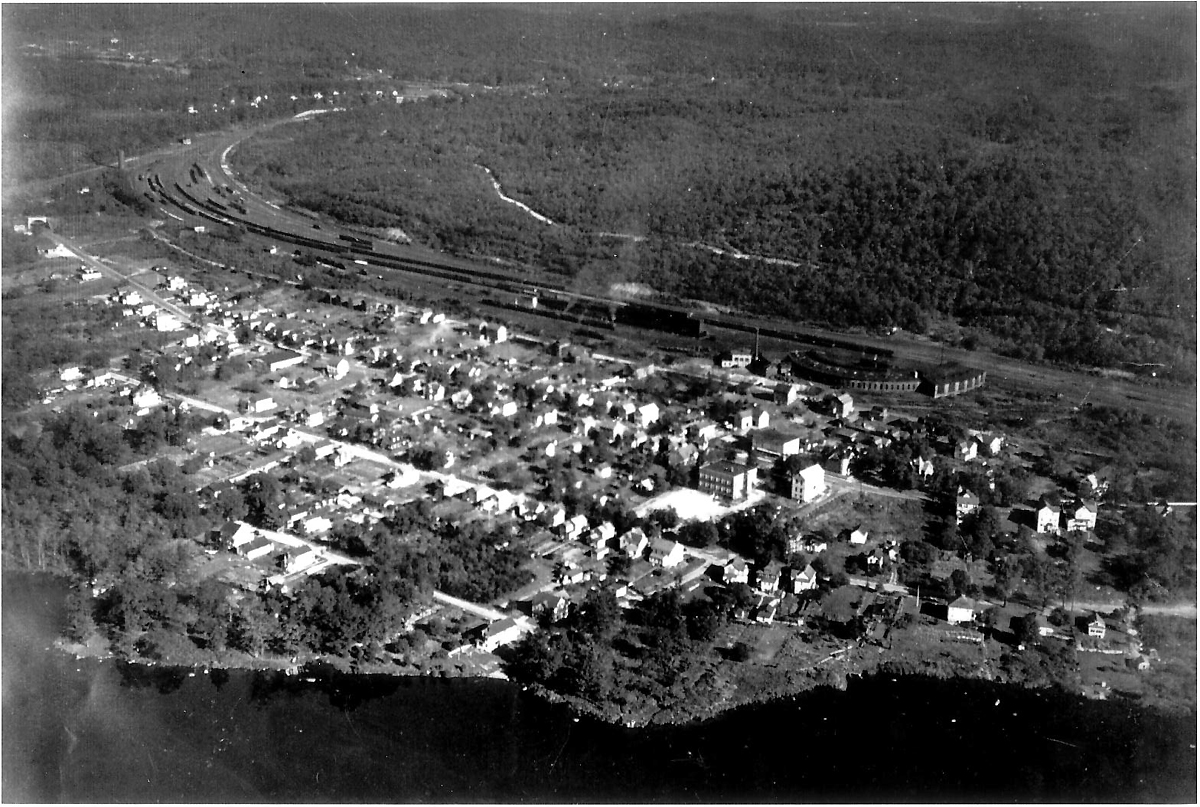
An aerial view of Port Morris, circa
1936-1940. Clearly visible at center right is the Railroad Train Roundhouse.
Lake Musconetcong is at the bottom.
Netcong is just out of view to the right,
Landing is at the top left of photo.
|
|
Port Morris is
an historic community in the Township of Roxbury, Morris County, New
Jersey. With a name like Port Morris, one would think it was on the
ocean or a major river instead of being tucked among the hills of
Northwest Jersey, away from any navigable body of water. The answer to
the question goes back to the 1820's, when a visionary by the name of
George P. Macculloch imagined a super highway to move commodities across
the hills of Northern New Jersey, particularly Coal from Pennsylvania
and Timber from western New Jersey to industries and markets in the
cities to the east. Up until then they moved at a snails pace in horse
drawn wagons over poor roads, so slowly that the effort to supply US
troops during the War of 1812 was impeded. Macculloch envisioned a super
highway of water, a canal, that allowed 30 tons of coal to make the
journey from Philipsburg New Jersey, near the coalfields, to Newark,
Jersey City or New York in just 5 days, an unheard of feat. The
Morris Canal was completed in 1830, and little hamlets sprung up along
it's route to service the crews and teams of mules that pulled the boats
laden with goods. Those little hamlets became towns, and Port Morris was
one of them, a major stop, or 'Port', due to it's long inclined plane
that pulled boats up the hill, or lowered them, all in massive wooden
cradles that held the boats and moved along rails that ran up and down the
incline. At Left: Port Morris from the 1887 Robinson's map. Lake Musconetcong is at lower left. The Railroad Roundhouse is the half round structure between the RR tracks and the Morris Canal. The top of this map points east by northeast. |
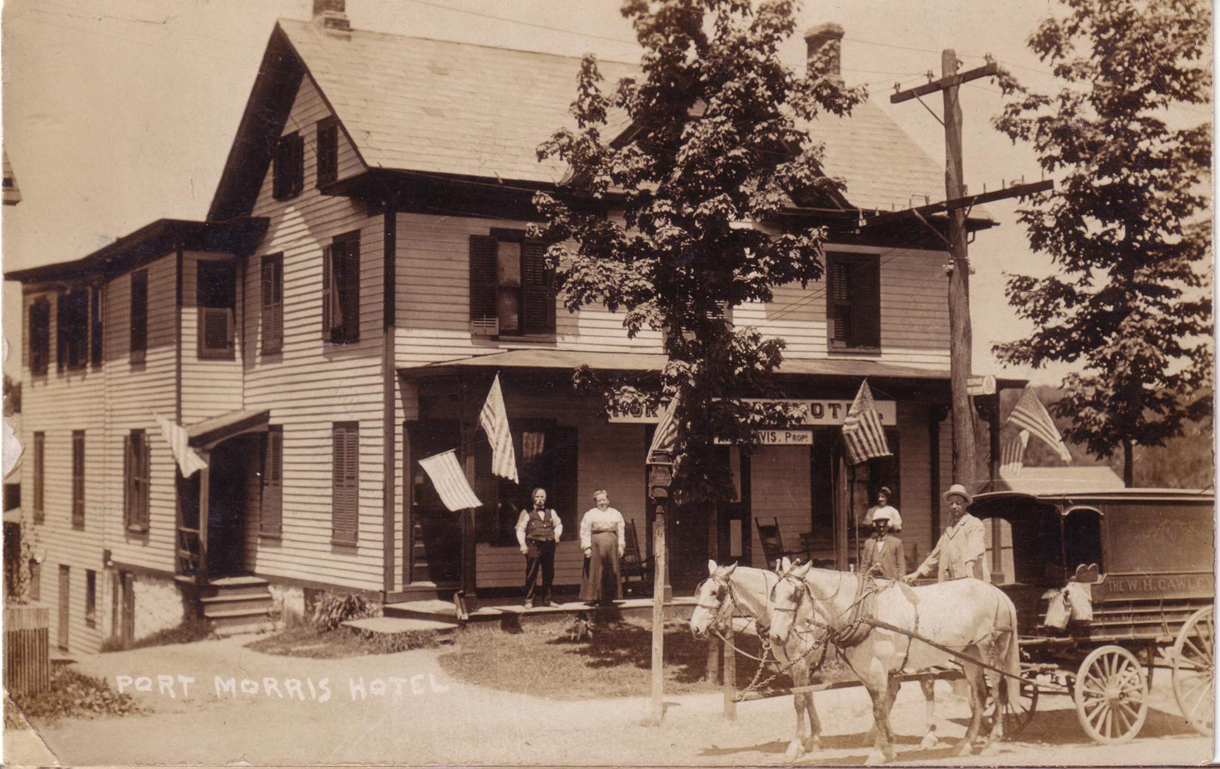
The Port Morris Hotel. This large rooming house stood at
266 Center Street. This photo is circa 1907 during the time it was owned & operated by
the Davis Family.
Note the "Telephone Pay Station" sign on the pole above the wagon driver. The
wagon is from the W.H. Cawley Company,
a beverage distributor which specialized
in Beer and Soda. This building burnt down in the 1930's. A house was built
there in the 1950's.
Thanks to Pat & Don Beach for this image scan and 2 others
below.
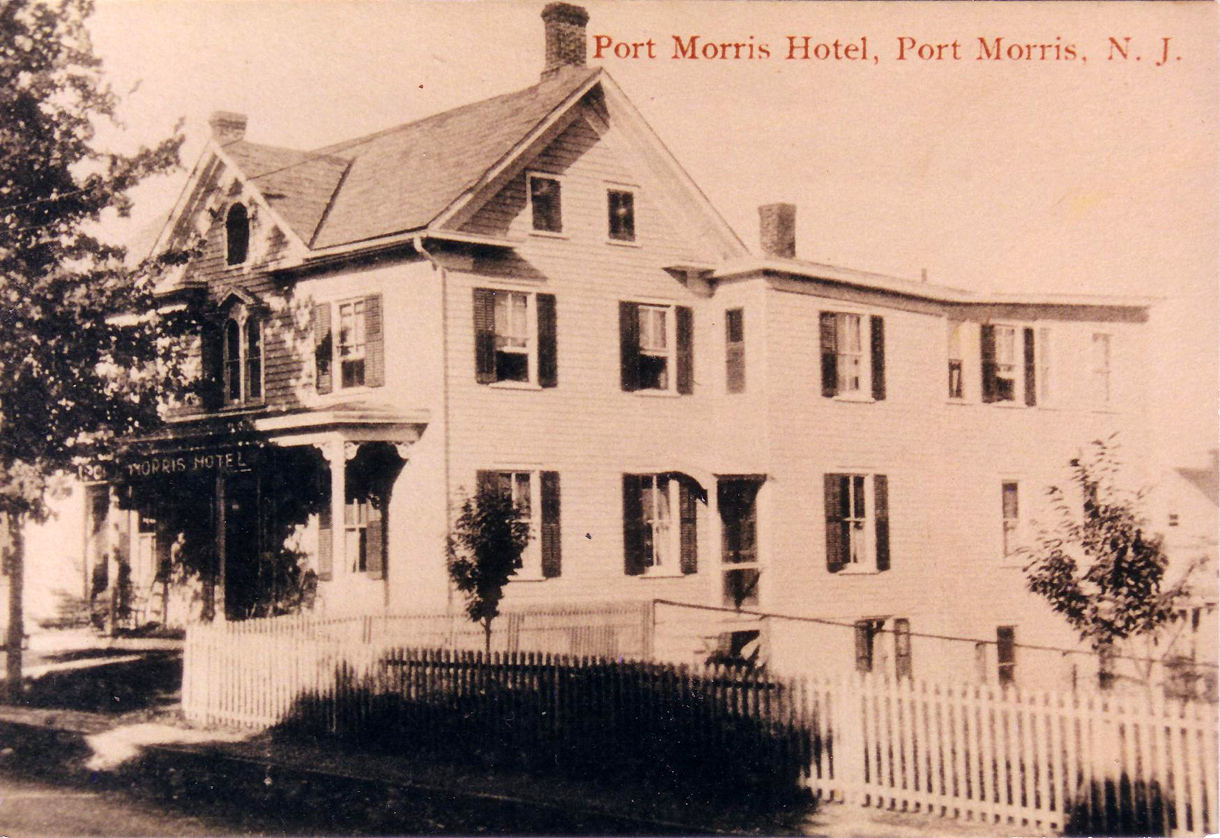
Another image of the Port Morris Hotel, probably a few
years later than the top image. By 1916 the hotel manager was Joseph Snyder.
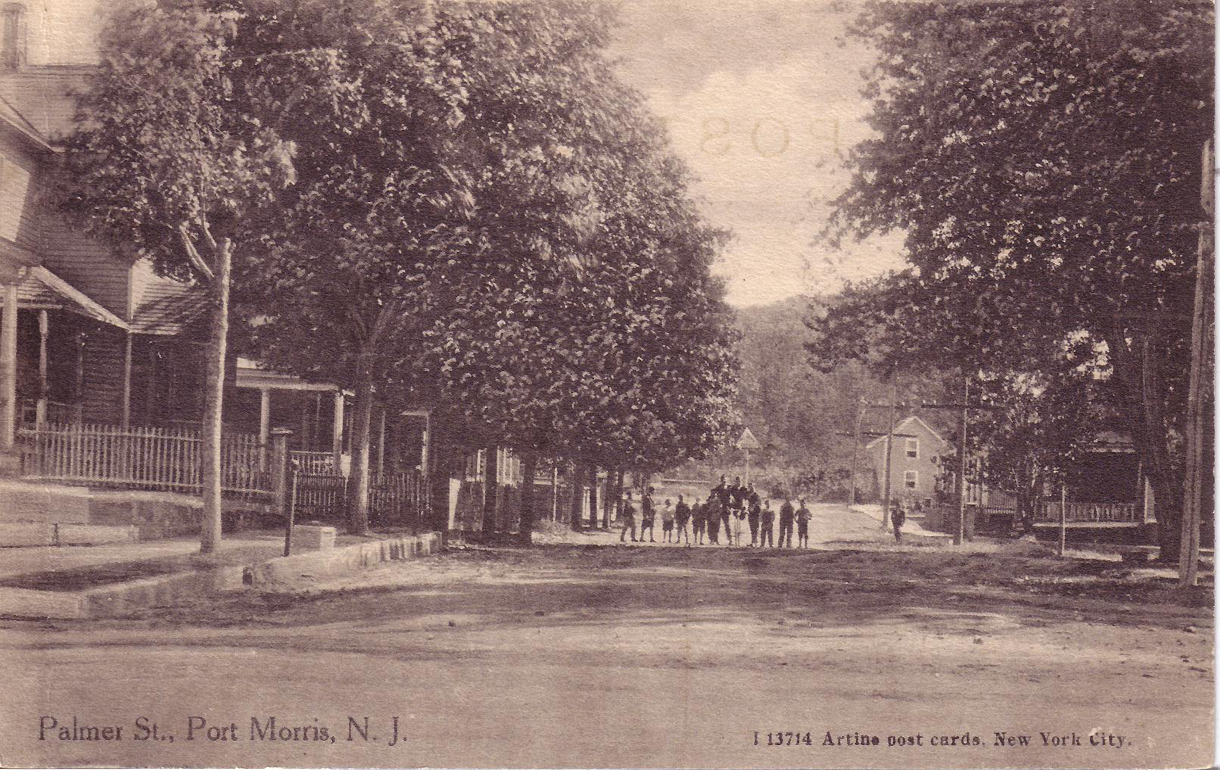
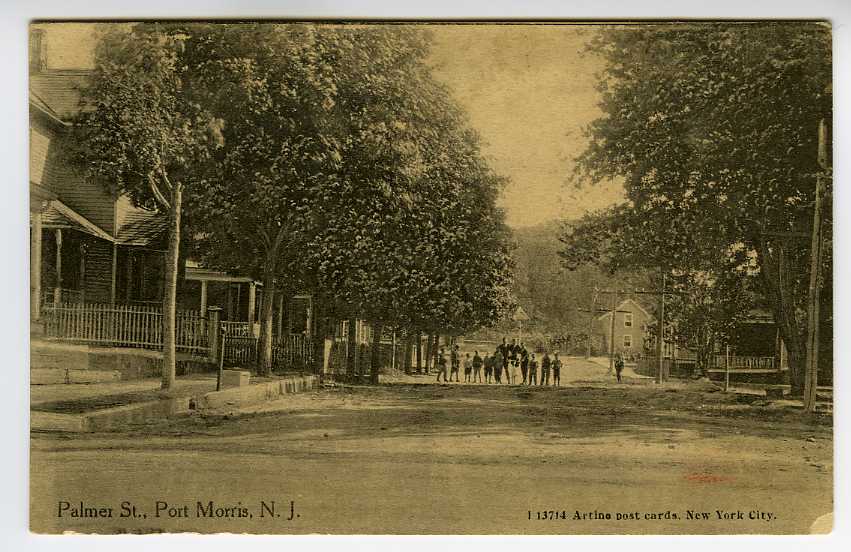
Looking south on Palmer Street, circa 1910. Note at left the hitching post and
stepping stone for Horse drawn carriages.
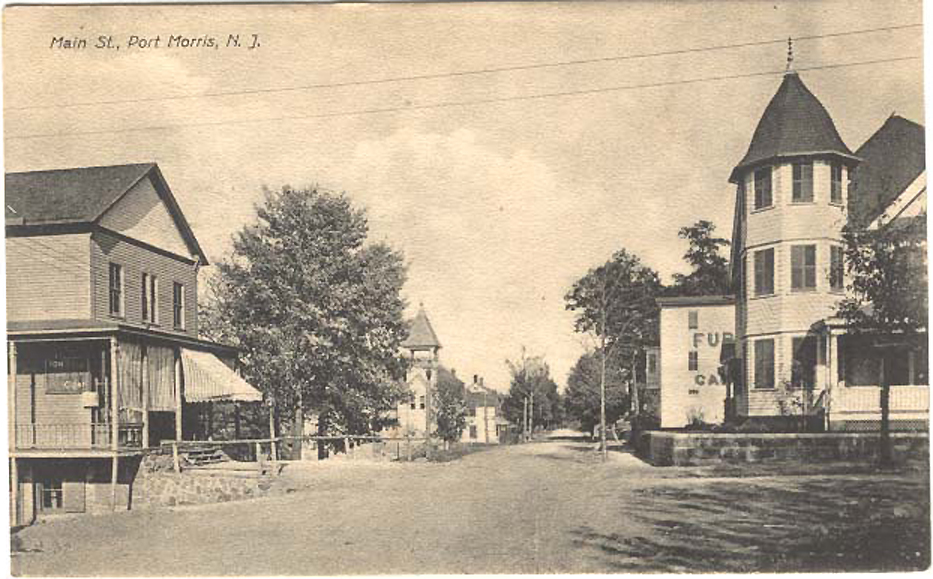
Looking east down Center Street, cor. of Palmer, circa 1904. Over
the years the building at left, 304 Center St, served variously
as
Thompson General Store, the 'Red Men' Lodge meeting hall upstairs, Rossi General Store
in the 1940's, the Post Office, Loppy's Barber Shop,
a
Shoemaker downstairs and
at one time Hrisko's -also spelled Risko's Pool Hall upstairs.
(Thanks Bob Waldron for the info!)
The square building (307 Center Street) at right behind the home is the Hulse General Store,
the signage looks like the
start of the
words "FURNITURE" and "CANNED GOODS", items seen in their print ads.
The home at right was built by the Hulse family.
(The Harding family purchased the Hulse Home and Store in 1926, operating the
Store, per Vol 3 of the Roxbury Historical Society, p. 96)
The store building at left burnt down in the late 1960's, the 2
buildings at right still (2012) stand.
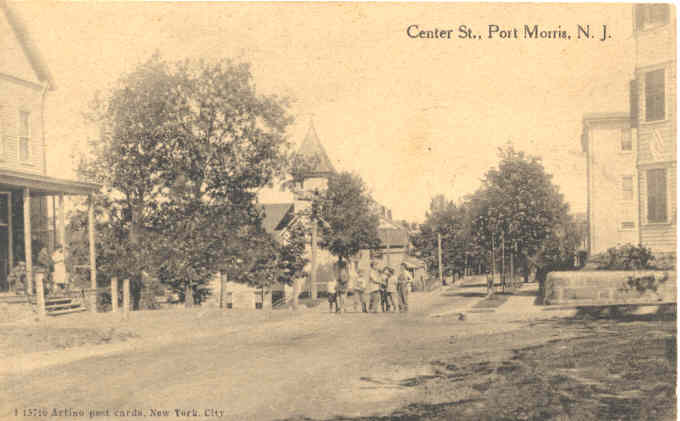
Same camera position as above, a narrower field of view, looks a few years later
than photo above,
note new sidewalk, circa 1910. Kids may be same group as Palmer St photo
above, same publisher.
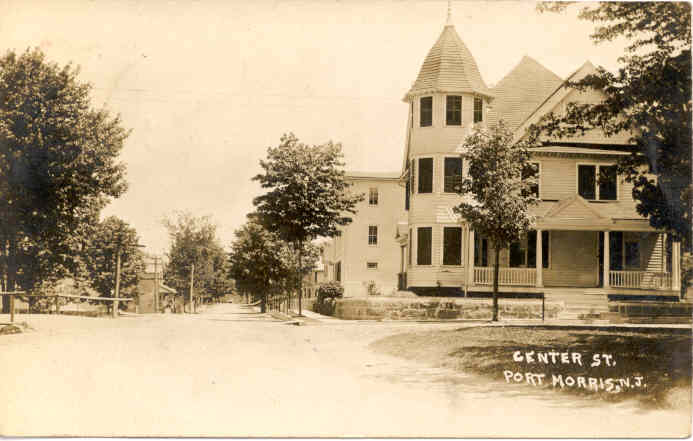
Center Street, corner of Palmer, looking east, circa 1912.
Jonas Hulse house on corner, built c. 1895.
Hulse also built the boxy building behind the house, it served as a store and
warehouse from which he made deliveries.
This is from the same corner as the photo above, except this view is about 50
feet further back.
-
|
These ads are from the June 1916 Roxbury High School Yearbook |
|
|
|
|
-
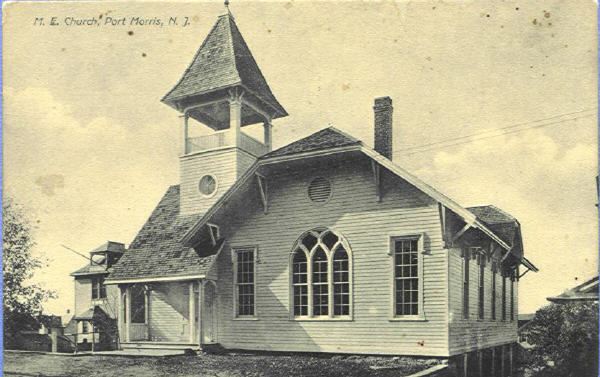
At one time known as the Methodist Episcopal Church, now as the United
Methodist Church of Port Morris,
this circa 1907 photo shows the building a few years after the move across the
Train tracks, see history below.
Behind it is a glimpse of the original Washington Elementary School.
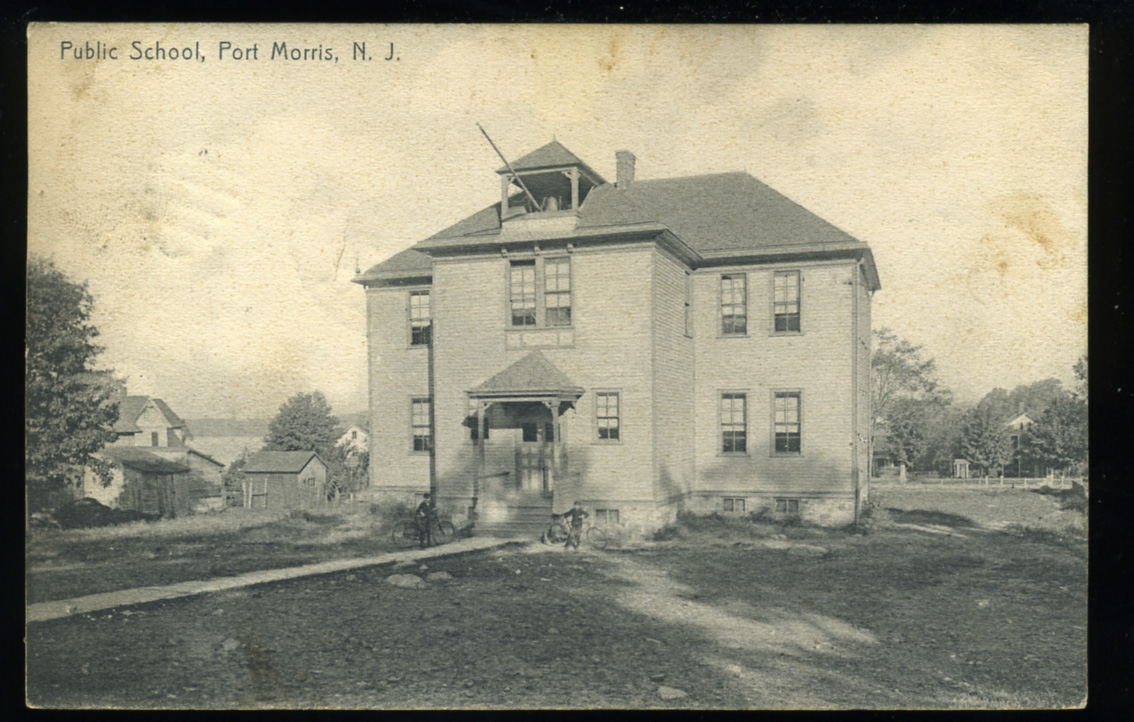
This is a rare circa 1907 postcard view of the Washington
School, the original Port Morris Elementary School building built in 1892.
It had 4 large classrooms plus offices and a large basement and stood on
Center Street. Lake Musconetcong can be glimpsed at left.
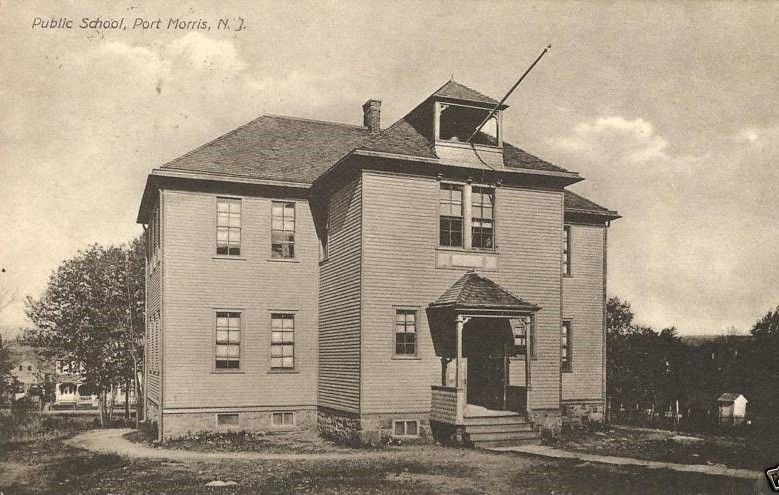
A different view of the Washington School, the original
Port Morris Elementary School building built in 1892.
Over 60 students attended the first year. This building was gutted by fire in
early 1922, torn down and rebuilt as a larger building, below.
After fire destroyed the original building and with a
growing population in Port Morris, a larger Elementary School was quickly
built in 1922-1923 on the same site with 8 classrooms, the Washington School.
The photo above is circa 1928. In 1969 a new
Elementary School in nearby Landing was completed, and with the completion of
that new school, Port Morris school children
started moving over to Landing, and the old Elementary school in Port Morris saw
its last class in June 1971. (thanks Mrs. Beers)
This building still stands (2020), having been converted to a private apartment
complex.
-
|
|
Port Morris on the
Morris Canal, circa 1890. To the right in the photo is the Blackwell
General Store, it provided supplies to the local residents and the
passing Canal Boats. The upstairs of the store was also rented out as a Hotel. This view looks southwest. |
-
|
|
|
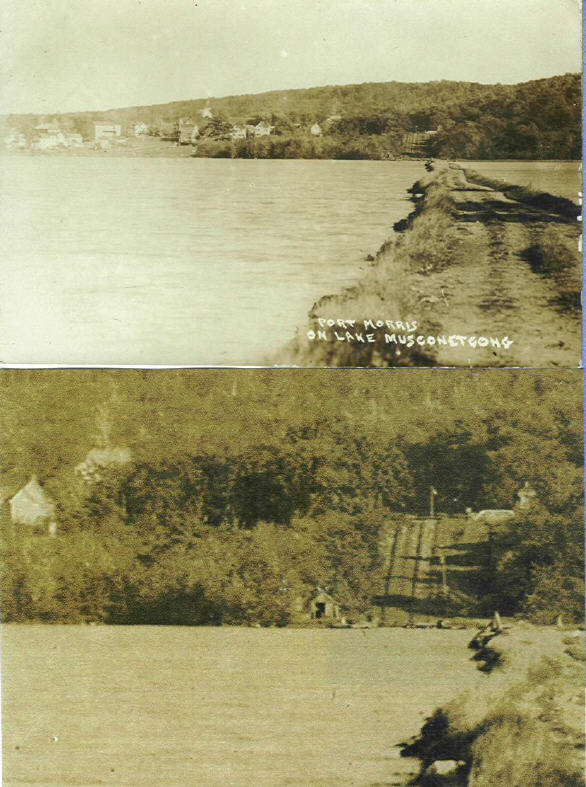
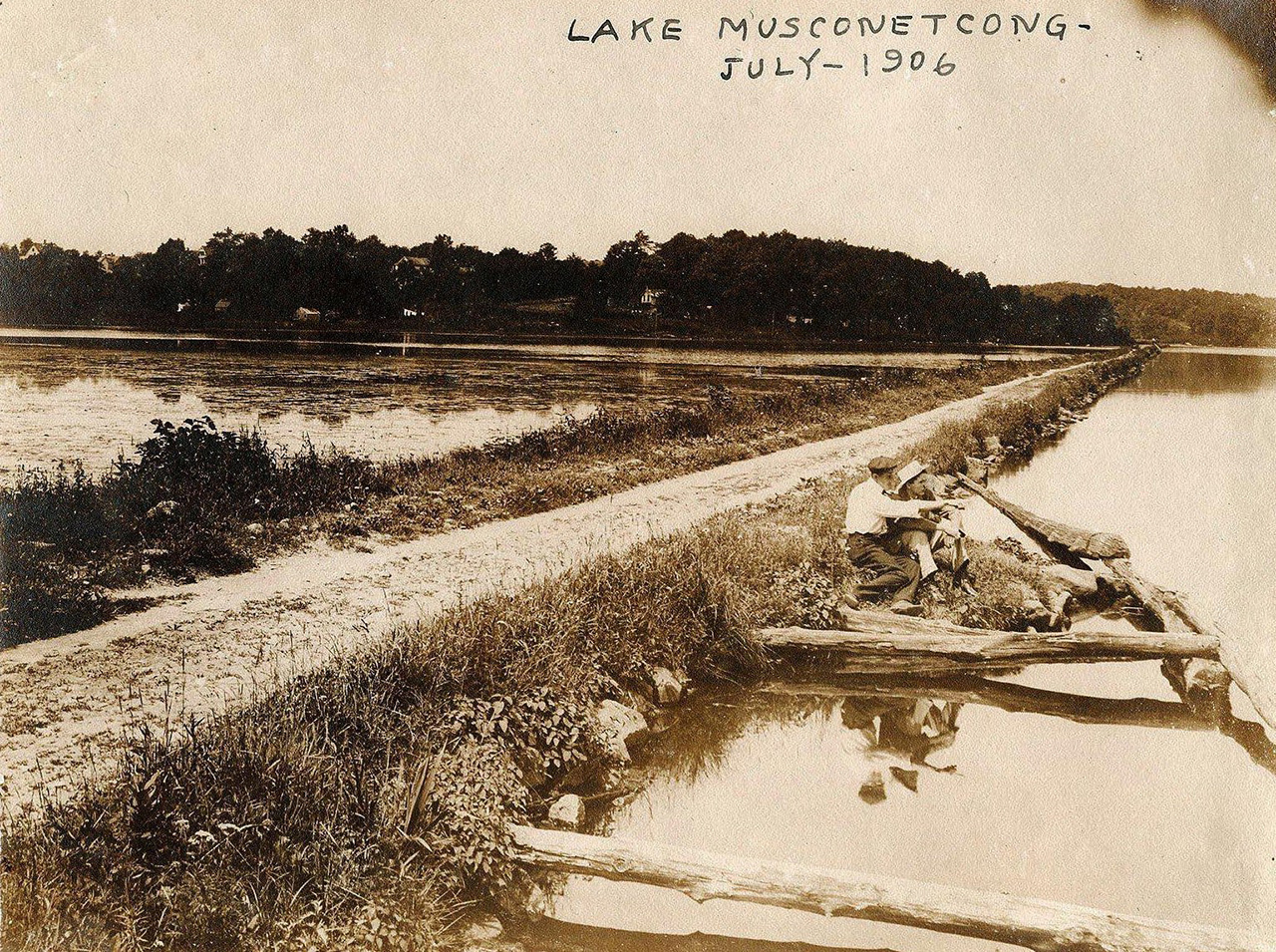
During the time the Canal was in use, there was an earthen causeway that ran
down the middle
of Lake Musconetcong, this allowed the mules
a walkway as they pulled the Canal
Boats. The
photos above shows a view on that causeway looking toward Port Morris, the
enlarged section
under it has a close-up of the "inclined plane". Photos circa
1906, this view looks east.
|
The medallion and the hard leather Fire helmets are memorabilia of the all volunteer Port Morris company of the Roxbury Township Fire Dept, thanks guys !! |
|
|
Top photo shows a busy day at the Roundhouse, Port Morris also had a large coal transfer station, c. 1905 |
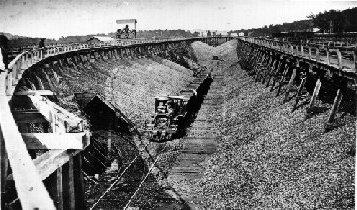 In this circa 1900 photo, a Steam Locomotive moves coal cars at the Port Morris Transfer station for the loads that came in from the Pennsylvania coalfields |
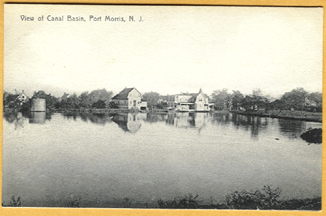 Here is the "Canal Basin", at the top of the 'Inclined Plane'. Photo c. 1905 |
Back of the Roundhouse, c. 1905. The bridge over the Morris Canal seen at the far left is shown below |
The bridge over the Morris Canal and
back of the Roundhouse, c. 1905
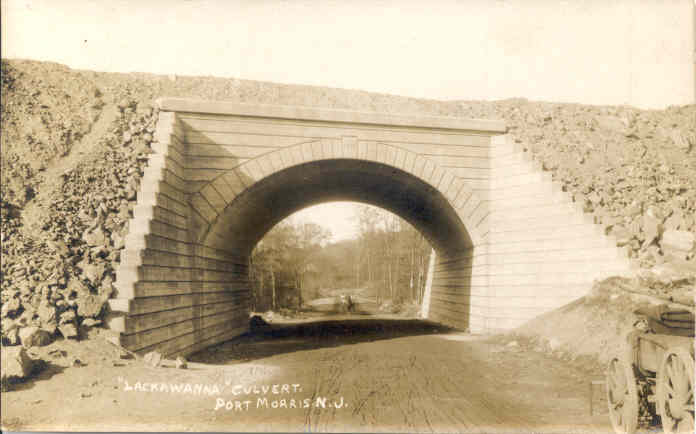
The building of the "Lackawanna
Cutoff" rail line in 1910 necessitated building two new bridges over
Center St, this is the easternmost one, dated 1910. This view looks east, with Landing in
the distance.
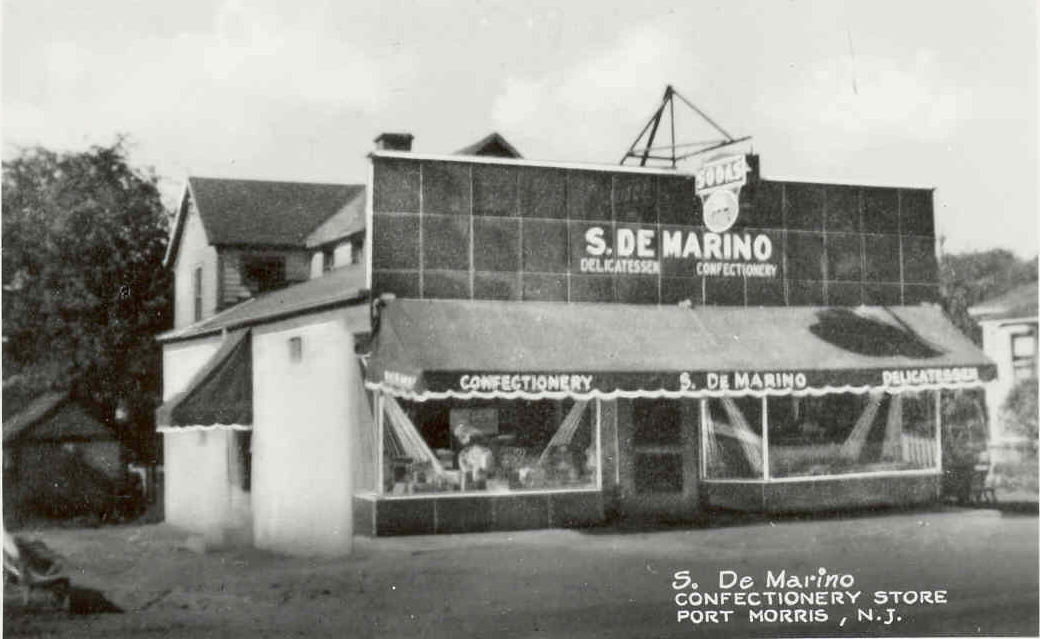
The Silvio De Marino
'Confectionery Store', circa 1940, one of almost a dozen stores in Port
Morris at that time. The De Marino family also owned and
operated a number of rides & concessions at Bertrand's Island Amusement Park in
nearby Mt. Arlington. The De Marino family down across the street.
The rise of large shopping centers in nearby
communities hurt the small Port Morris stores, De Marino's closed circa 1969,
most others by the early 1980's.
This building still stands today after extensive remodeling and conversion into 2 residential apartments.
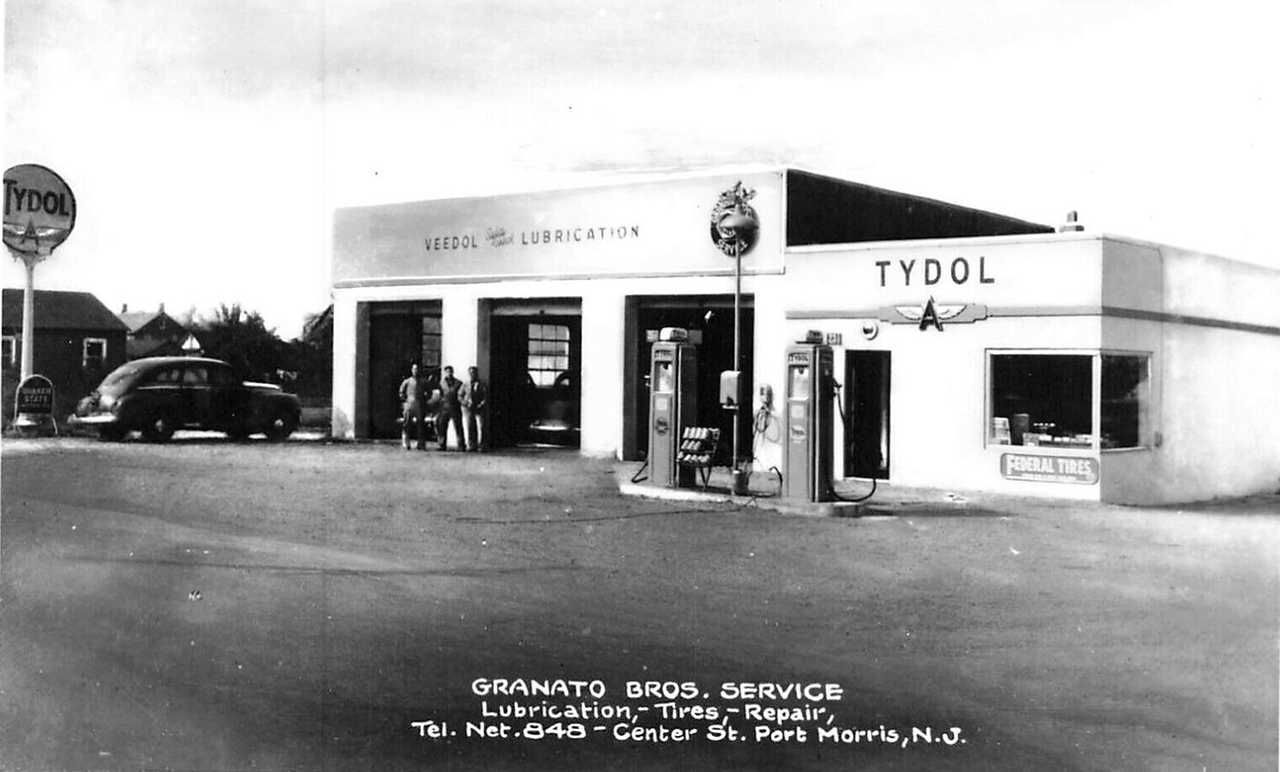
| The Granato Brothers Service
Station, Port Morris, NJ, circa 1948.
Photo provided by the Granato Family,
Thanks ! Joseph Granato writes: "Before the Garage there was a small movie house of some sort on the property. The deed says we could not show movies on the property anymore. John and Joseph Granato Sr. built the building, they had both worked at Aires Chevy before that. John Granato was in the Navy during the war. My Great Grand Father worked on the railroad. My Grand Father lived at 19 Washington Street. John Granato lived in Mine Hill. My Father moved to Stanhope and that is where I grew up. However as a teenager I hung out with the Port Morris kids. I pumped gas at the station, 3 generations of Granato's worked at the station. They started out with a 3 car shop and then phone company came along and added the large garage in the back. Eventually they moved over to where they are today in Netcong" The Grananto Bros Gas Station opened around the time of World War Two and closed about 1982. The building was recently renovated and is in use. |
-
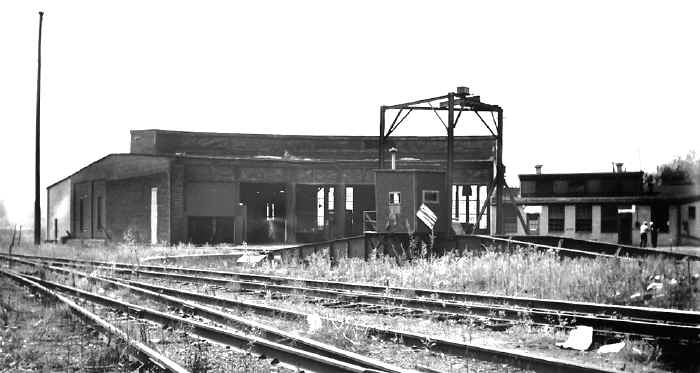
The remains of the Port Morris Railroad
roundhouse in 1963.
|
by the website editor M.
Balston (with sources listed below)
1875 -- On March 29,
1875 the Port Morris Post Office was established with Ira Mowery as Postmaster.
Also in 1875 a Methodist Sunday School was organized for the children of the
Railway Workers, numbering 20 students who met in a small building built onto
the rear of the Railway Roundhouse. By October, Sunday afternoon services of the
newly organized Port Morris Methodist Church began. Services were initially held
in the same room used for Public School during the week. Within several years a
separate Church building was constructed at the end of the row of 12 houses on
Kings Highway. During this time, some residents
attended the Presbyterian or Methodist Churches in Stanhope or the Baptist or
Catholic Churches in Netcong. For many during this era, Church affiliation was
often determined by
national origin, with the Scots and English attending the Presbyterian or
Methodist Church, Italians attending the Catholic Church, with the Baptist
Church attracting a mix of those who embraced an evangelical Christian
faith. 1908 -- The "New"
Landing Bridge is completed. Built of stone and masonry, it continues to stand
to this day. Trolley service came to Landing at this time. The Morris County
Traction Company Trolleys come from Morristown, through Dover and up to the
Lake. The tracks pass over the new bridge and run up Mt. Arlington Blvd. to the
picnic & bathing park at Bertrand Island. My Dear Mrs. Roosevelt, 1941-1945 -- A total of 108 men from Port Morris served in the US Armed Forces during World War 2, of these, two men gave their lives. THE MODERN ERA
1960's-present -- In 1961 a new modern Post Office for Landing was built on Lakeside Blvd. and in 1966 the Port Morris Post Office closed, residents are now served by the Landing P.O. In 1969 Nixon Elementary School in Landing was completed. With the completion of the new Landing school, Port Morris schoolchildren started moving over to Landing, and the old Elementary school in Port Morris saw its last class in June 1971. All this served to diminish the separate identity of Port Morris as it became subsumed into Landing in the minds of some. The opening of the large Landing Shopping center contributed to the eventual closure of most of the remaining Port Morris retail stores, with Joe's Market, a grocery and one of the last retail stores, closing in 1983. Several service businesses remain, along with a seasonal Vegetable Stand/Garden Center. Through the 1990's the Port Morris train yard had a series of renovations to become a Coach Yard for New Jersey Transit Commuter Trains. At present, Port Morris has about 1,000 residents. Even with all the changes, some remnants of the Port Morris of years ago remain, including several buildings along Center Street in Port Morris which were stores years ago, the elementary school, now converted to apartments, and the grand old homes that hearken back to the Railroad glory days of Port Morris. ©2003, 2024 LandingNewJersey.com. Some of the material here was newly uncovered by the Editor over a period of 10 years of researching local history using original source documents & interviews. Please do not reproduce or use on another website without permission. - Personal account by Sal Valentino of growing up in Port Morris - Barbara Carmean Dickisson: A girl grows up in Port Morris, Photo Story - History of the Red Men Tribe Fraternal Lodge in Port Morris - Selection of vintage family photos from Port Morris - Port Morris during World War II Wild West City, Netcong, NJ Memories & History Information for this page came from a
variety of sources, including: |
We would like to add to
this page with YOUR stories. E-mail us, we'll post it!! We're seeking any scans
of
family photos you
have showing the streets of Port Morris or Netcong. Don't hoard, share a scanned
image. Contact us for technical tips, OR,
if you're in the northwest Jersey area we'll come and scan your images, no
charge, and they never leave your possession.
If you
know Port Morris history and can add to this page, you can
![]()
DID YOU KNOW? NFL Football Player Dave Moore grew
up in Port Morris. A 1988 graduate of
Roxbury High School, lettering in football,
basketball, baseball and track,
Moore played for the
Tampa Bay Buccaneers
from 1993 thru 2002, the Buffalo Bills in 2003 and ended
his
NFL
career back with Tampa in 2006.
He lives in Florida where he owns a Restaurant and does Radio Commentary for
Tampa Bay Games.
Updated March 12, 2024 - Click here to Return to main page